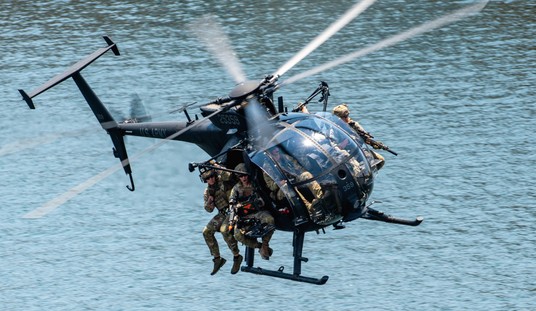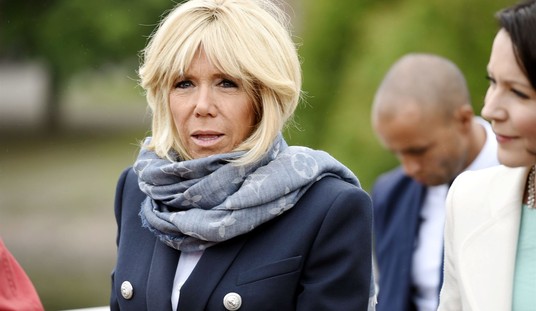Not two full days after Trump announced the US withdrawal from the Iran deal, Quds forces in Syria launched twenty missiles into Israeli territory, several of which were intercepted by the IDF Iron Dome missile defense system (those that weren’t intercepted apparently fell short). No Israelis were hurt. The Quds are an arm of the Republican Guards, and they were also responsible for the Shiite violence against American forces in Iraq, including the use of IEDs that took and injured the lives of our citizens. The Golan Heights is disputed territory, which the Israelis took in 1967 after Syria, Jordan, and Egypt lost the Six Day War. To the victors the spoils and, tactically, taking the area was necessary because it is high ground that looks over pre-1967 Israel. This is the first time that Iranians directly launched missiles onto Israeli soil.
In response, the IDF launched a series of strikes against the Iranians.
The Israeli military said Thursday that it had bombed dozens of Iran-linked military facilities in Syria, as tensions between the three countries soared.
The army said in a statement that its fighter jets had targeted Iranian intelligence and logistics sites around Damascus, as well as munition warehouses, observation and military posts — what a top official said were most of their facilities in the country.
The question is this: Were the Iranian strikes a symbolic protest against the Trump’s announcement, or are the Iranians choosing to escalate the conflict? In my opinion, the former. The Iranians wanted to convey strength after getting a diplomatic back-of-the-hand from Trump (and perhaps to probe the Israeli response). The Israelis launched an immediate, yet measured missile assault so, in that vein, the Israeli message was “don’t f**k with us.” I’m guessing that the Quds will return to their business as usual of propping up a decrepit Assad regime but, since I can’t get into the Mullahs’ heads, who can say for sure?
Trump will be issuing sanctions next week against the de facto theocratic despots, and I doubt the Iranian missile attacks will soften Trump’s economic blow against the Mullahs. The Saudis and UAE pledged to amp up the oil supply in order to dampen the expected increase in the price per barrel, so our withdrawal isn’t going to hit our economy much.
The Economist has a white paper on the situation, and the parts that interested me were about Iran’s internal situation.
A US withdrawal from the JCPOA would ratchet up tensions in the Middle East, raising the risk of new conflict that pits Iranian proxy forces against the US and its allies in the region. Crucially, the longrunning political battle in Iran between moderates and reformists pushing for deeper relations with the West, and hardliners demanding much greater resistance to Western influence, would swing from the former to the latter. A failure to deliver a “post-sanctions dividend” would test the patience of the Iranian public and that of the supreme leader, Ayatollah Ali Khamenei, which would exacerbate social unrest and lead Ayatollah Khamenei to renew and intensify calls to build a “resistance economy”. This would empower hardline conservative elements of Iran’s military-political establishment and lead to a more confrontational approach to foreign policy.
Iran would remain a tinder box owing to heightened popular frustration with the government’s economic management and nationalistic sentiment fuelled by hardline conservatives. A US abandonment of the nuclear deal, combined with a deterioration in economic conditions, would probably lead to an eruption of civil protests. This situation would be exacerbated by the unpredictable interventions of the Islamic Revolutionary Guards Corps (IRGC) in the country’s political and economic spheres, as well as the residual dominance of vested business interests. Political and social reform would be stifled, and economic liberalisation would be likely to stall. With more than 1m new entrants to the labour market every year, far outstripping job creation, and the youth unemployment rate already at over 25%, the pressure would continue to mount on the Iranian authorities, which could prompt a change in political leadership but not wholesale regime change, as the status quo would be protected by the IRGC and other security forces. The IRGC would be very unlikely to allow for greater transparency and competition in the Iranian economy.
In other words, the regime is unlikely to change unless enough renegade IRGC are involved, but that is unlikely because they’re getting and staying rich off the rest of the populace. They have inextricably insinuated themselves into the fabric of the Iranian economy. And what about that Iranian economy?
A US withdrawal from the JCPOA and the reimposition of sanctions represent a major downside risk to the Iranian economy. A reduction in Iran’s oil exports in 2018 and 2019, combined with weaker national and foreign investment, would lead to a modest contraction in real GDP growth in fiscal year 2019/20 (March 21st-March 20th). Under our central forecast, we expect growth to average 4.1% a year in 2018/19-2019/20, but given that oil accounts for around two-thirds of the Islamic Republic’s export receipts, a 400,000-b/d cut (equivalent to over 15% of current oil export volumes) would have a drastic impact on growth and the public finances. That said, the economy would be likely to return to weak but positive economic growth thereafter, with trade not as curtailed as was the case in the pre-JCPOA period of 2012-15.
With the country’s international reputation on the wane, Iran would become ever more reliant on China and Russia to shield it from further international sanctions—an approach that would yield some success at the UN, but would deny the country the infusions of Western investment and technology that it badly needs to upgrade its economy. Under pressure from renewed sanctions and faced by reticent Western businesses and investors, Iranian economic policy would take on more aspects of the supreme leader’s “resistance economy”. Under this economic model, the government would increase efforts to enhance self-sufficiency and domestic production in some areas, while protecting or developing the economic role of state bodies such as the IRGC and religious foundations at the expense of some foreign (Western) investors. However, the government would have little choice but to tighten its belt as oil revenue declines and the weak economy depresses tax and customs earnings, forcing it to pare back capital projects and refocus spending on the military, public-sector salaries and pensions in order to buttress its support base.
This doesn’t seem like a big enough economic hit to trigger regime change, but I’d rather have the Mullahs fiscally and financially weakened as long as they continue to behave like meddling autocratic buttheads.













Join the conversation as a VIP Member